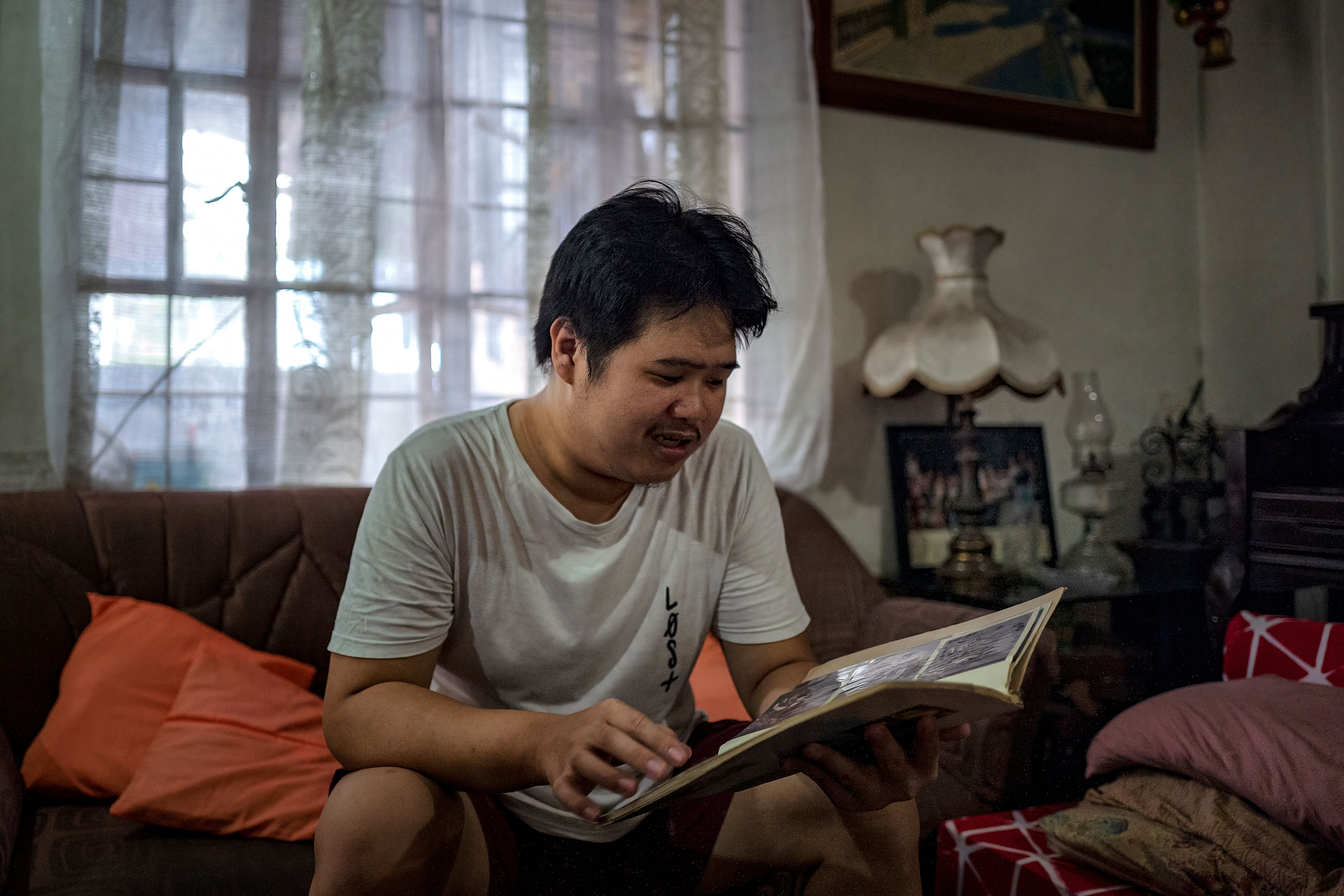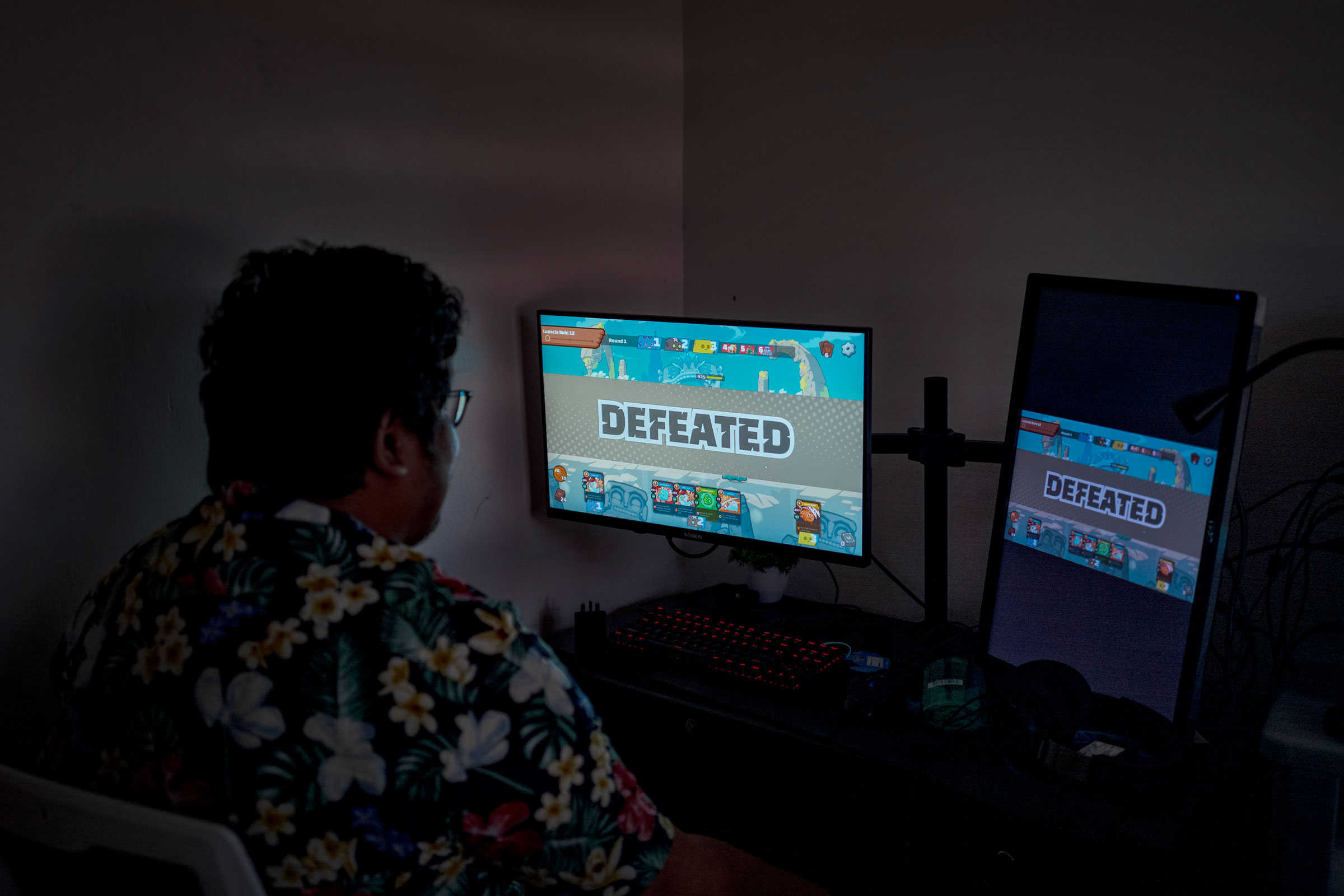Axie Infinity has left Filipino gamers distraught + in debt
Samerson Orias was working as a cook last year in the countryside of the Philippines when his friend told him he could make a lot more money playing a new video game.
Orias earned about 4,000 pesos a month (about $80, a little less than half the national minimum wage) takoyaki—Japanese squid balls. His friend told him that he and others were making up to $600 a month Axie Infinity, a game powered by cryptocurrency and NFTs.
Orias, now 26, desperately needed an escape hatch from his financial woes: his mother had suffered a stroke and needed medication, and utility and grocery bills were piling up. So he plunged in Axie, fighting cartoon monsters for hours late into the night. He soon started earning cryptocurrency, which he converted into pesos, so he could take better care of his mother and his home. At the same time, thousands of young people in the Philippines jumped headlong into the game. For a brief moment at the peak of crypto’s astounding boom in 2021, these young Filipino players fulfilled a long-held dream of crypto’s most ardent evangelists: that “play to earn” blockchain games that Axie can lead the way to a fairer, more opportunity-rich global economy.

Orias looks at family photos at his home.
Ezra Acayan for TIME

Orias cooks at a Takoyaki shop.
Ezra Acayan for TIME
Fourteen months later, most Filipino players, including Orias, have exited the game to nurse their anger and anxiety—and in some cases, down thousands of dollars. Orias began to hate playing the game. It was boring and stressful, he says, a common refrain among the dozen players TIME interviewed for this story. “I felt tired all the time. I became more aggressive in all aspects of my life, he says.
The story of Orias and Axie Infinity serves as a cautionary tale for crypto and its bombastic rhetoric about changing the world. Many crypto thought leaders, when rebutting criticism about the unpleasant aspects of the space, point to its impact in developing countries. But Orias and others say so Axie Infinity reinforced predatory systems and gave them false hope. Innovative metaverse ideas like Axie Infinity offers enormous promise – but also a tangible danger for those who feel they have no choice but to step into the digital unknown.
Play to earn the dream
At first blush, Axie Infinity looks a lot like Pokemon. To enter the game, players purchase three cute cartoon monsters called Axies, each with their own strengths and weaknesses. They then fight other axes, making them more powerful. Along the way, players earn in-game currency called Smooth Love Potion (SLP), which can be exchanged for other cryptocurrencies. You can also sell your Axie or breed new, more valuable monsters. Each Axie monster is an NFT: a unique non-fungible token whose ownership is recorded on the blockchain, a secure ledger of transactions. This technology has been touted by many as a potential backbone of the metaverse’s development.
Axie Infinity was created by a Vietnam-based startup called Sky Mavis Inc. as part of the growing play-to-earn player movement. For other popular games like League of Legends and Fortnite, it is common for elite players to live off of sponsorships and revenue from streaming their games to online viewers. With Axie Infinity, the earning potential is baked into the game itself. “We believe in a future where work and play become one,” the game’s website said last year.
Sky Mavis takes a cut of in-game transactions and sits on a large stash of tokens. By October last year, the company had raised more than $150 million from investors, including venture capital firm Andreessen Horowitz.
The game initially had a big impact in the Philippines. At one point, players there made up 40% of the game’s user base. About a quarter of the Southeast Asian nation of 110 million people live below the poverty line, and the economy is heavily dependent on some 2.2 million migrant workers who send money home. But as the pandemic closed borders across the globe and cut jobs, many of these workers were sent home. As prolonged covid-19 lockdowns crippled the local economy, many are turning to multiple fundraising schemes to make ends meet.
Owen Convocar, a Rizal-based player, heard rumblings about Axie’s earning potential for months in early 2020 before he decided to enter the game as a scholar. In 15 days he earned $487. He soon invested $1,200 to buy his own Axie monsters, splitting the total cost 60/40 with his mother.
The early victories in the pandemic by players like Convocar brought global news coverage and hundreds of thousands of new players into the game. But as the game’s popularity grew, observers pointed out that its financial structure was unsustainable: the value of SLP required new players to constantly buy in, much like a Ponzi scheme. Sky Mavis’ team even acknowledged in its white paper that the game was “dependent on new entrants.”
“Focusing on growing a network through early incentives does not make a Ponzi scheme,” a representative for Sky Mavis wrote in an email to TIME. “Axie InfinityThe main purpose is to provide entertainment.”
As the price of SLP continued to rise last summer, many aspiring players found themselves unable to afford the cost of purchasing their starter monsters. So a tenure scheme emerged where wealthier investors, known as “managers”, would buy Axie monsters and then lend them to “scholars”, who would handle the grunt work of leveling up. The owners of the monsters would then pocket anywhere from 30% to 50% of the scholars’ profits, according to players interviewed by TIME. The system was unregulated, with Axie owners falsifying the terms of the contracts, which they portrayed as a way to spread the wealth. Orias hoped to become one of the system’s beneficiaries last May when he signed up with a manager based in Australia. The manager demanded that he earn at least 120 SLPs a day – which would take five to six hours of playing – and would pocket half of Orias’ earnings.

Albert Oasnon, an Axie “manager,” plays the game at his home in Imus, Cavite, on the outskirts of Manila, Philippines, July 19, 2022. Oasnon, who works in content marketing and also runs a small media company, says that during the game’s peak in last year managed around 20 scholars.
Ezra Acayan for TIME
So Orias developed a daily routine where he cooked takoyaki from 3pm to midnight, come home, and play Axie beyond the small hours of the morning. His game brought him much-needed cash: around $29 a week, after giving the same amount to his manager. But his relentless schedule, and the randomness of the game, exhausted and frustrated him. “At first I was happy. But after a while I noticed that I was slowly getting weaker. It was insomnia and the stress of the game, he says.
And in August, Orias returned to the game each week to find the real value of the in-game currency dropping. As more players entered the game and generated more and more SLP tokens, the value of each token decreased. In November, the research firm Naavik reported that average earnings for Axie scholars had fallen below the Philippines’ minimum wage.
By the spring of 2022, the bottom had fallen out of the crypto market, making it almost worthless to play the game. While Axie Infinity boasted over 2.7 million daily active users last November, only 760,000 are still active, according to a tracker. The value of SLP peaked at $0.34 last July; it is currently worth less than half a penny.
And when Sky Mavis tried to tinker with the game design to make it viable again, a much bigger disaster struck. In March, a hacker targeted the “bridge” through which money was transferred between Sky Mavis’ blockchain Ronin and the much larger cryptocurrency Ethereum. (Bridges between chains are one of the least secure parts of blockchain ecosystems.) More than $600 million was quickly drained from the network, two-thirds of which belonged to the users themselves. While Sky Mavis returned all funds, the hack demoralized the game’s user base.
At the moment, Sky Mavis is doing a hard pivot, which does not emphasize Axieits “play to earn” nature and introduces a new version, Axie Infinity: Origin, which does not involve crypto at all. They hope players will stick to the game itself, and to earn money through experiences and in-game purchases.
Meanwhile, large amounts of money are still being pumped into the blockchain gaming industry. In April, gaming organization Ready Player DAO received a $150 million valuation in a new $10.2 million funding round. But Ethan McMahon, an economist at research firm Chainalysis, says Axiethe failures bode poorly for crypto’s once rosy play-to-earn future. “Perhaps a select group of the best players will actually be able to profit from gambling. But any individual’s initial motivation to gamble will not be solely for profit,” he says.
And Filipino scholars, who were told that blockchain games would bring about radical economic change, are leaving confused and exhausted. Several scholars TIME spoke with said they owe hundreds or even thousands of dollars to friends or family who helped them pay the initial investment, only to have their monsters become worthless. Convocations Axie account was hacked in March and recovering his losses set him back around $190. “I took good care of Axies, and my account got invalidated,” he tells TIME. He soon quit.

Orias (right) and his childhood friend Jonathan Artates at their Takoyaki shop in San Mateo, Rizal, on the outskirts of Manila, Philippines, on July 19, 2022. It was Artates who introduced Orias to the game Axie Infinity. He has also quit the game after his account was hacked.
Ezra Acayan for TIME
Orias drifted away from the game towards the end of last summer, after his mother died of a heart attack. Her funeral wiped out his savings, including the $200 he had saved up to gamble Axie. “I regretted not being able to provide for my mother,” he says.
Now he’s back in takoyaki stand, and hope to save up for a separate food stall. “For those who are having a hard time, for those who are pushed to the limit,” he says about Axie, “stop playing.”
—With reporting by Julia Zorthian
More must-read stories from TIME


